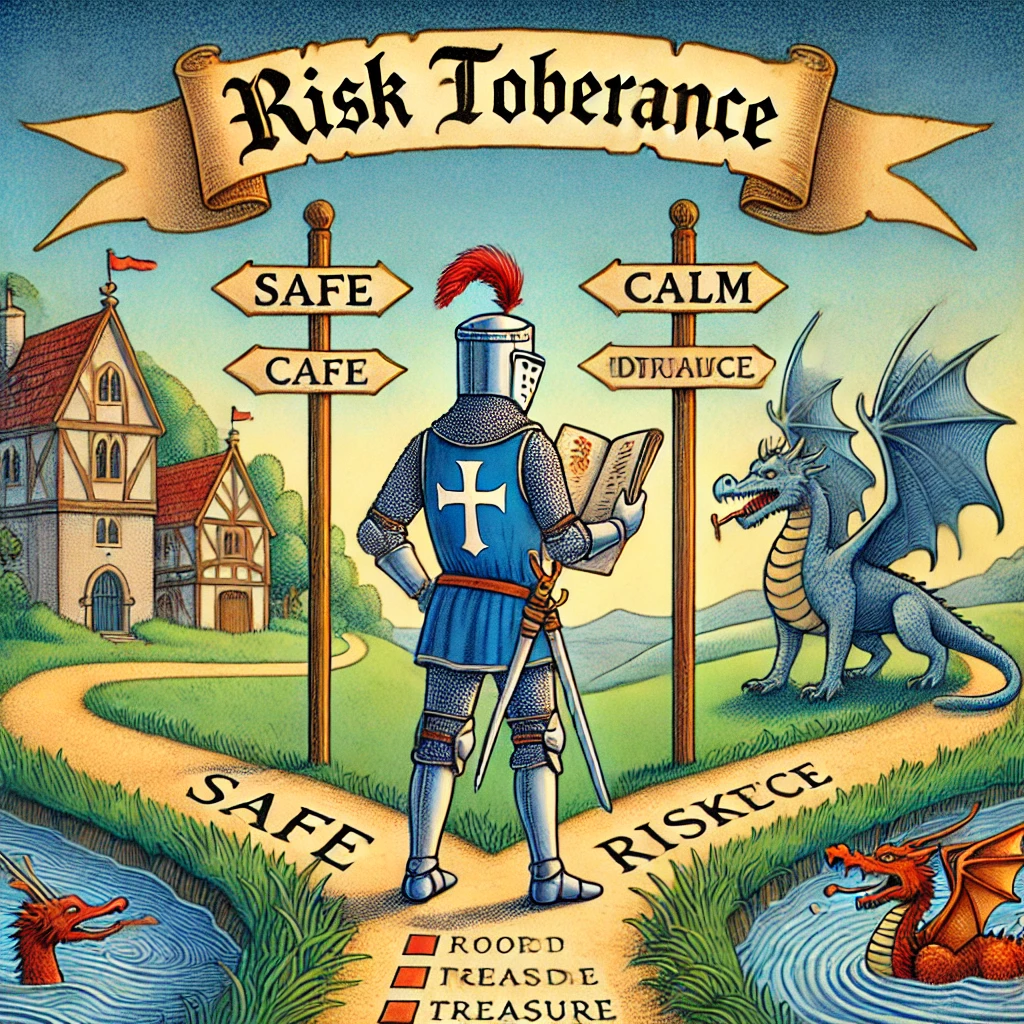Introduction
Investing is an exciting yet complex journey filled with opportunities and challenges. Whether you are just starting out or have years of experience, one factor that profoundly influences your financial decisions is your risk tolerance. Risk tolerance not only determines the types of assets you invest in, but it also shapes how confidently you ride the ups and downs of the market. Understanding risk tolerance can empower you to make more informed, tailored decisions that align with your long-term goals and personal comfort level.

In this article, we will explore what risk tolerance means, why it matters, how to assess it, and how it impacts your overall investment strategy. By the end, you’ll be better equipped to map out a portfolio that suits both your aspirations and your nerves.
What Is Risk Tolerance?
Risk tolerance refers to how much uncertainty or potential financial loss you can comfortably withstand in pursuit of higher returns. Some investors can handle drastic market swings without losing sleep, while others feel stressed even by minor losses.
- High Risk Tolerance: You are generally unperturbed by market volatility and may invest in high-growth assets with significant ups and downs (e.g., tech stocks, emerging markets, or cryptocurrency).
- Moderate Risk Tolerance: You balance growth and stability, often diversifying across different asset classes (e.g., a mix of stocks, bonds, and perhaps some real estate).
- Low Risk Tolerance: You prioritize capital preservation and steadier returns, favoring investments like bonds, blue-chip stocks, or government securities.
Understanding where you land on this spectrum is crucial for managing both your emotional well-being and your financial outcomes.
Why Risk Tolerance Matters
- Emotional Control: Knowing your risk tolerance helps you remain calm during market turbulence. This emotional stability can prevent impulsive decisions—like panic-selling at market lows.
- Portfolio Alignment: Investments should align with your comfort level. A portfolio that is too risky may cause you undue stress, while an overly conservative one might limit long-term growth.
- Goal Achievement: Balancing your need for higher returns with the potential for loss is vital to reaching milestones such as retirement, buying a home, or funding education.
Your risk tolerance will guide key aspects of your financial plan, including asset allocation, investment selection, and response to market fluctuations.
Factors Influencing Risk Tolerance
Risk tolerance isn’t static; it’s influenced by multiple factors that can shift over time. Here are a few major determinants:
- Age and Investment Horizon
- Younger investors typically have a longer timeline to recover from market dips, allowing them to take on more risk.
- As retirement or other life goals approach, many people naturally become more conservative in their investment choices.
- Financial Goals
- Short-term goals (e.g., saving for a wedding next year) usually require stable, low-volatility investments.
- Long-term goals (e.g., retirement in 30 years) can accommodate riskier, growth-focused assets.
- Personal Income and Net Worth
- Investors with higher incomes or greater net worth might be more comfortable taking on additional risk because they have a financial cushion to absorb possible losses.
- Conversely, individuals with limited resources tend to be more cautious, focusing on preserving capital.
- Emotional Comfort
- Your temperament plays a significant role. Even if you have the financial capacity for risk, a naturally cautious mindset may lead to a more conservative approach.
How to Determine Your Risk Tolerance
Assessing your risk tolerance involves a mix of self-reflection and objective tools. Here are some steps to guide you:
- Questionnaires and Online Tools
Many financial institutions offer risk-tolerance questionnaires that provide a baseline evaluation. These tools consider factors like your reaction to past market downturns, investment time horizon, and financial goals. - Stress Testing Your Portfolio
A “stress test” looks at how different market scenarios—such as a sudden recession—would impact your current investments. Reviewing these simulations can help you see if you’d be comfortable with potential losses. - Consult a Financial Advisor
A professional can offer deeper insight, considering your entire financial picture. Their expertise can help refine your risk profile and tailor a strategy that balances growth with peace of mind. - Self-Assessment
- Reflect on how you felt during market turbulence in the past.
- Consider any personal events or upcoming expenses that might require liquid capital.
- Examine your daily stress level when viewing your portfolio.
Adjusting Your Investment Strategy
Once you’ve identified your risk tolerance, you can fine-tune your strategy:
- Asset Allocation: The mix of stocks, bonds, real estate, and alternative investments should align with your comfort level.
- Diversification: Spread your investments across various sectors and asset classes to mitigate risk.
- Rebalancing: Regularly review and adjust your portfolio to ensure it remains aligned with your goals and tolerance.
- Investing Consistently: Consider dollar-cost averaging (investing a set amount at regular intervals) to smooth out market volatility.
The Psychology of Risk Tolerance
It’s important to understand that risk tolerance is not purely financial—it’s also psychological. Emotions like fear and greed can overshadow even the most logical strategy:
- Fear of Loss (Loss Aversion): People often feel the pain of loss more intensely than the joy of equivalent gains. This bias can lead to overly conservative choices or panic-selling.
- Overconfidence: At the opposite end, overestimating your ability to predict or handle risk can result in taking on more volatility than you can truly tolerate.
- Herd Mentality: The tendency to follow what everyone else is doing can push you into risky markets at their peak or prompt you to sell in a panic.
Recognizing these emotional pitfalls can help you stay rational and disciplined, even when markets become turbulent.
Impact on Portfolio Diversification
Risk tolerance directly influences your diversification strategy. If you have a high tolerance, you may hold a larger proportion of growth stocks, international equities, or alternative investments like cryptocurrency. For a lower tolerance, you might opt for more stable assets such as bonds, dividend-paying blue-chip stocks, or mutual funds that aim for slow, steady growth.
Optimal diversification doesn’t mean never experiencing losses; it means balancing asset classes so that when one area dips, others can potentially offset those dips. This stability can help you weather market cycles more comfortably, especially if your risk tolerance leans conservative.
Real-World Examples
- The Young Professional
- Age: 25
- Risk Tolerance: High, because of a long time horizon and minimal financial responsibilities.
- Portfolio: Mostly growth stocks, tech startups, and index funds with a smaller percentage in bonds or cash.
- Mid-Career Saver
- Age: 40
- Risk Tolerance: Moderate, balancing career stability with upcoming expenses like children’s education.
- Portfolio: A mix of growth and value stocks, higher-quality bonds, possibly some real estate.
- Retirement-Focused Investor
- Age: 60
- Risk Tolerance: Low, with a focus on preserving capital to ensure a stable income during retirement.
- Portfolio: Larger allocation to bonds, dividend stocks, and cash or cash equivalents.
How Risk Tolerance Evolves Over Time
Your tolerance for risk may change due to personal and market factors. Major life events—like marriage, birth of a child, or inheriting wealth—can shift your financial picture and your comfort level with uncertainty. Regularly revisiting your risk profile ensures your investment approach remains relevant and effective.
The Role of Professional Advice
Even if you’re confident in your self-assessment, a financial advisor can offer valuable perspective. Advisors can help you:
- Interpret your risk tolerance objectively.
- Build a diversified portfolio suited to your goals.
- Stay disciplined during market fluctuations.
- Plan for taxes, insurance, and other financial contingencies.
A professional’s expertise can save you time and stress, ultimately helping you navigate the complexities of the market.
Conclusion
Risk tolerance is the foundation of any sound investment strategy. It guides not only your choice of assets but also how you respond to market volatility and long-term financial planning. By understanding and actively managing your risk tolerance, you set yourself up for a more stable, goal-focused investment journey.
Take the time to assess your comfort with risk—use questionnaires, consult advisors, and perform portfolio stress tests. Align your investments with your personal threshold for uncertainty, and remember that this threshold can evolve over time. With a solid grasp on your risk tolerance, you’ll be better equipped to build lasting wealth and stay calm in any market climate.
Ready to strengthen your financial strategy?
Share this article with your friends and family to help them understand the power of risk tolerance. And if you’re looking for more personalized guidance, don’t hesitate to seek professional advice or explore our resources at WealthyPot.com.
